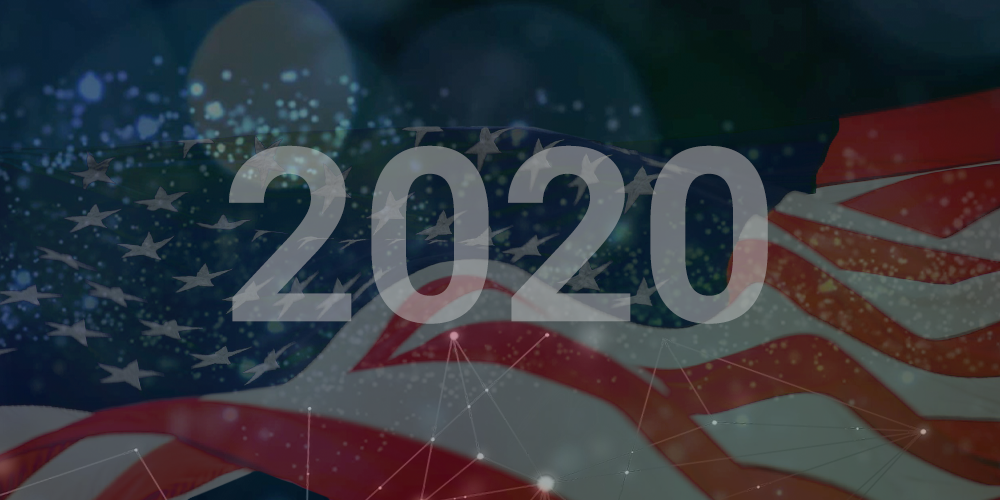Implicit Emotions Toward Biden & Trump in Swing States Provided Better Results Than Polling

Remember it? Emotions were running high.
Most political polling revealed a significant advantage for Biden in key battleground states. While the polling data conveyed a tightening race, the Real Clear Politics poll of polls continued to show advantages for Biden in the former “blue wall” of Wisconsin, Michigan and Pennsylvania; newly competitive states like Georgia (B: 47.8, T: 47.4) and Arizona (B: 47.6, T: 46.6) were now within the margin of error for explicit polls.
In addition to these states, there was Florida. The RCP average favored Biden (B: 48.3, T: 47.3). Could we trust those numbers? Were they reflective of how people are actually filling out their ballots? If 2016 polling results are any indication, we need new sources of insight.
We turned to an implicit emotional measurement technique to try to gain greater insight on voter emotions. Going beyond what people are willing and able to admit in a survey, these techniques measure the degree of non-conscious emotional associations with each candidate. The degree of passion captured using these methods can provide insight into voter turn-out and candidate choice.
Sentient analyzed and reported on the results in four key battleground states: Florida, Pennsylvania, Arizona and Ohio. As evident by the data, emotions related to these candidates are very strong. This may be unsurprising to many people living in the US during this election cycle. However, what may be unexpected to some is the degree of negative emotion implicitly associated with Donald Trump. The negative emotion scores observed for Trump are in the 95th percentile among Democrats and were significantly negative among Independents in Pennsylvania and Arizona.
Especially important for Biden was the finding that Democrats dislike Trump much more than Republicans dislike Biden. This was true in both Arizona and Florida. While the election outcomes were ultimately determined by voter turnout, this implicit data suggests that the emotions which ran so high for Democrats may also have them running to the polls.
2020 Presidential Candidate Implicit and Explicit Results for Battleground States
Florida
In a must win state, Trump’s chances were good. While neither party is in love with their candidate, Trump held a significant edge in emotional appeal among Independents, and this group also self-identified much more with Trump than Biden. The Democrats silver-lining? Dislike for Trump is severe among Democrats while appeal of Biden is neutral among Republicans. This contrast in Implicit Emotional Appeal may be a factor driving more Democrats to the polls than Republicans.


Pennsylvania
One of the key states of the great “blue wall” that fell in favor of Trump in 2016 was also in play in 2020. However, the implicit emotion data indicated that Joe Biden would carry Pennsylvania, depending on voter turn-out. The implicit dislike of Trump is severe among Democrats and emotional appeal was negative among Independents. This translates into a significant advantage for Biden among Independent voters. This group of voters is also significantly more likely to self-identify with Biden than they are with Trump.


Arizona
If Pennsylvania went for Biden, Trump’s path to victory would get much narrower. That path would have been even more narrow based on insight from the implicit emotion data from Arizona. In Arizona, Republicans had a negative implicit emotional reaction to Trump. Perhaps just as importantly for Biden, Independents in Arizona also implicitly disliked Trump, while simultaneously felt positive emotional appeal toward Biden. Interestingly, the Independents in Arizona self-identified much more with Biden than they o with Trump which is the opposite pattern of Independents in Florida. Democrats in Arizona show significant negative emotion toward Trump and implicit positive appeal for Biden. If Independents and Democrats showed up at the polls in numbers proportionate to Republicans in 2020, the state would have gone to Biden.


Ohio
If Ohio did not go for Trump, the promise of his re-election would be slight. The explicit polls in Ohio showed a very tight race, with the Real Clear Politics average (poll of polls) showing Trump at 47.0% and Biden at 46.8%. The implicit data paints a similar picture but with greater nuance. Importantly for Trump, he had a positive Implicit Emotional Appeal in Ohio. Additionally, Republicans in Ohio carried a very negative implicit perception of Biden. The wrinkle? Independents found Biden less negative than Trump, and were equally likely to identify with Biden and Trump. Importantly for Biden, Democrats showed stronger passion for showing up at the polls for Biden, than Republicans did for Trump. The outcome would depend heavily on the proportion of party voters, rather than Independents, that showed up to the polls.


Disclaimer: The information provided is based on data tested in the past and may not reflect the current state of affairs. New developments, scientific discoveries, policy changes, or other factors may have emerged since then, which could significantly impact the accuracy and applicability of the information provided.


